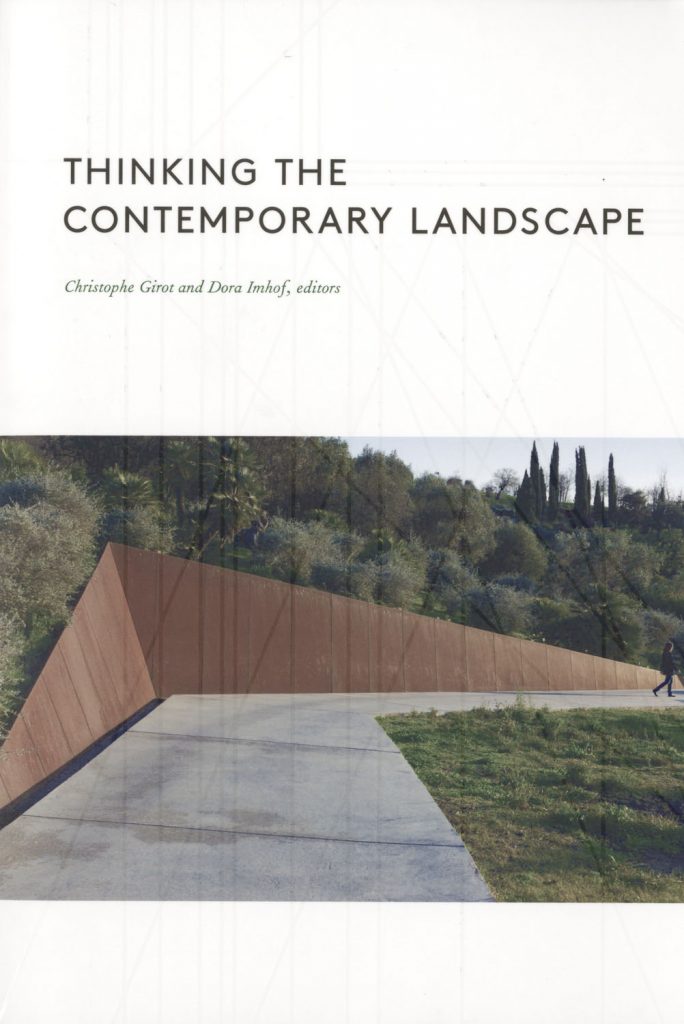
EDITORS
Christophe Girot, Dara Imhof
AUTHORS
Among the authors are Christophe Girot, Saskia Sassen, Charles Waldheim, James Corner, Annette Freytag, Susann Ahn, Regine Keller.
REVIEW
DATE OF PUBLICATION
October 2016
SPECIFICATIONS
English
15.2×22.9 cm
$ 45
ISBN 978-1-61689-520-4
Thinking the Contemporary Landscape, a 17-essay collection, attempts to set up a discourse between opposing ideologies, such as science and memory, power and territory, fact and myth, in order to present an all-encompassing theory of contemporary landscape practice.
Examining our shifting perceptions of nature and place in the context of environmental challenges and how these affect urbanism and architecture, the seventeen essayists in Thinking the Contemporary Landscape argue for an all-encompassing view of landscape that integrates the scientific, intellectual, aesthetic, and mythic into a new multidisciplinary understanding of the contemporary landscape. A must-read for anyone concerned about the changing nature of our landscape in a time of climate crisis.
A Daily Dose of Architecture :
“The seventeen essays, composed into three sections (landscape reframed, landscape composed, landscape rethought), “look at the profession of landscape architecture as it reacts to new challenges posed by both societal and environmental change and considers new fields of action.” It does this with some heavy-hitting contributors: James Corner, Adriaan Geuze, Girot himself, David Leatherbarrow, Saskia Sassen, Charles Waldheim, Kongjian Yu, and numerous others. It’s a diverse collection that is deep and thought-provoking but will also, as the editors admit, “raise more questions than it will bring answers.”
Landscape Architecture :
“This compilation of 17 essays on the modern meanings of landscape architecture is largely academic but does occasionally surprise. The chapter by Kongjian Yu, FASLA, Think Like a King, Act Like a Peasant: The Power of a Landscape Architect and Some Personal Experience provides fascinating perspective on China, where rapid development and industrial degradation make for much to do.
Yu points out that while Chinese landscape design has traditionally been associated with elites (creating a paradise for entertaining and pleasure making), its real value lies in the good it can do for the masses.”
SavingPlaces.org (website of the National Trust for Historic Preservation):
“With the newest edition of Wright Sites: A Guide to Frank Lloyd Wright Public Places, Joel Hoglund of the Frank Lloyd Wright Building Conservancy provides the only comprehensive guide to Wright-designed buildings open to the public in the United States and Japan. Though the book is envisioned as a guide, it also illustrates Wright’s professional evolution and philosophy of organic architecture, with photographic examples of his differing regional styles as well as Prairie Style and Usonian houses.”
The Architect’s Newspaper:
“a must-read for landscape architects and urbanists.”

